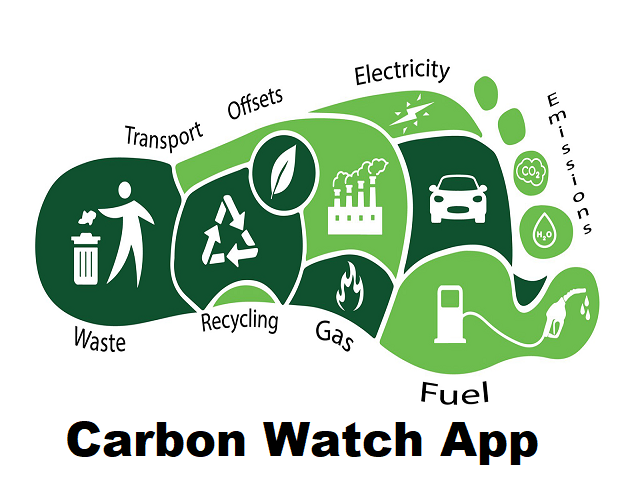
TO ACCESS CARBON FOOTPRINT A CARBON WATCH APPLICATION
WHY IN NEWS?
- Chandigarh became the first state or Union Territory in India to launch Carbon Watch, a mobile application to assess the carbon footprint of an individual.
- A carbon footprint is the total amount of greenhouse gases—primarily carbon dioxide—released into the atmosphere by a particular human activity.
MORE ABOUT THE APP:
- The app focuses on individuals’ actions and calculates carbon footprint on the basis of Transport, Energy, Waste and Water consumption.
- It will also provide information such as the national and world average of the emission, and the individual’s level of emission generation.
- It encourages people to be Climate-Smart Citizens while making them capable of accessing their carbon footprint, along with providing them with steps to reduce it.
- It also sensitizes people about their lifestyle emissions, their impact and possible countermeasures to mitigate the same.
Carbon Footprint:
- According to the World Health Organization (WHO), a carbon footprint is a measure of the impact people’s activities have on the amount of carbon dioxide (CO2) produced through the burning of fossil fuels and is expressed as a weight of CO2 emissions produced in tonnes.
- It is usually measured as tons of CO2 emitted per year, a number that can be supplemented by tons of CO2-equivalent gases, including methane, nitrous oxide, and other greenhouse gases.
- It can be a broad measure or be applied to the actions of an individual, a family, an event, an organization, or even an entire nation.
Carbon Footprint vs Ecological Footprint:
- Carbon footprint is different from ecological footprint. While the carbon footprint measures the emission of gases that contribute to global warming, the ecological footprint focuses on measuring the use of bio-productive space.
Effects of Higher Carbon Footprint:
- Climate change is the ultimate effect of large carbon footprints. Greenhouse gases, whether natural or human-produced, contribute to the warming of the planet.
- From 1990 to 2005, carbon dioxide emissions increased by 31%. By 2008, the emissions had contributed to a 35% increase in radiative warming, or a shift in Earth’s energy balance toward warming, over 1990 levels.
- According to World Meteorological Organization (WMO) records, 2011-2020 was the warmest decade on record, in a persistent long-term climate change trend.
- Depletion of Resources: Large carbon footprints deplete resources on large scales, from a country’s deforestation activities to one home’s increased use of air conditioning.
Methods of Reducing Carbon Footprint:
- Adopting the 4 R’s- Refuse, Reduce, Reuse, Recycle.
- Driving more-efficient vehicles (or making sure that current vehicles are properly maintained), taking public transportation.
- Individuals and companies can also offset some of their carbon dioxide emissions by purchasing carbon credits, the money from which can go into projects such as planting trees or investing in renewable energy.
- Implementation of the Climate change conventions like the Paris Agreement and Indian initiatives for the same must be fast forwarded.
- Indian initiatives include Nation Action Plan on Climate Change (NAPCC), National Wetland Conservation Programme, etc.
